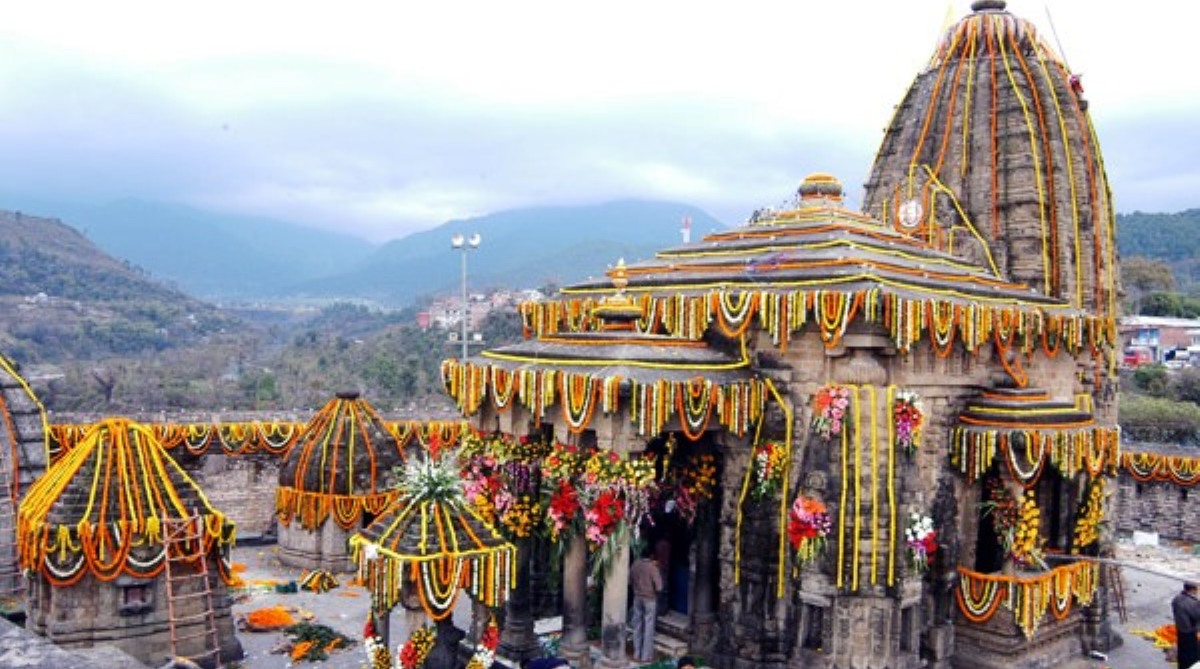Himachal Pradesh CM pays tribute to Kargil martyrs on Vijay Diwas
Remembering the valour and supreme sacrifice of the Kargil martyrs on Vijay Diwas, Chief Minister Thakur Sukhvinder Singh Sukhu paid tributes to them on Vijay Diwas on Friday.
The residents stay away from Dussehra celebrations and organisation of Ramleela so as to not incur the wrath of Lord Shiva as Ravana was his staunch devotee.

(Photo: SNS)
Though the Dussehra celebrations and holding of Ramleelas across the country and even in Himachal Pradesh are a norm yet people in the ancient town of Baijnath in Kangra district keep away from these celebrations.
The reason: the locals don’t want to incur the wrath of presiding deity, Lord Shiva, to whom the famous Baijnath temple is dedicated or to avoid bad luck as per the local traditions.
But this is not something unique happening this year as the residents of Baijnath town never celebrate Dussehra.
Advertisement
In this small town, no effigy of Ravana is either built nor is set on fire as the demon king is considered Lord Shiva’s staunch devotee and locals believe that they will invite the wrath of the deity if the demon king’s effigy is burnt.
“No one in Baijnath town takes part in Dussehra festivities or burn effigies of Ravana as it will bring bad luck for them,” Akshay Singh, a resident of Baijnath told The Statesman.
Singh said there is a myth that anyone who takes part in festivities will die of unnatural death as there were folk tales of families who faced such consequences for celebrating Dussehra.
“The residents are so inspired by myths and Ravana’s dedication for Lord Shiva that they don’t burn his effigy,” he said.
“In fact, the market remains closed on Dussehra festival but residents don’t buy any sweets or firecrackers,” he added.
In addition, there is no jewellery shop in the market as it is believed that Lord Shiva hated gold and Lord Hanuman had burnt Ravana’s Lanka which was made of gold to the ground.
Legend has it that Ravana prayed to Lord Shiva in Himalayas for a long time for seeking immortality and beheaded his ten heads at the altar.
Pleased by his dedication and sacrifice, Lord Shiva granted him his wish and restored his 10 heads but Ravana wanted him to come with him and settle in Lanka.
Lord Shiva agreed and gave him Lingam so Ravana could carry it to Lanka but there was a condition that he wouldn’t set it on ground on the way to Lanka or Lord Shiva would reside at the place from then on.
On the way to Lanka, Ravana felt the need to answer nature’s call and handed over the Lingam to a shepherd (believed to Lord Ganesha) who put it down on the ground while he was answering nature’s call.
And the place came to be known as Baijnath.
The present structure, the rock temple built in Nagara style of architecture, was constructed in 1204 AD by two local merchants named Ahuka and Manyuka.
The two long inscriptions in the porch of the temple indicate that a temple of Lord Shiva existed at the spot even before the present one was constructed.
Baijnath town is perched at an altitude of 4,311 feet in Dhauladhar mountain range in the Himalayas and is located around 220 km from state headquarters in Shimla.
Advertisement